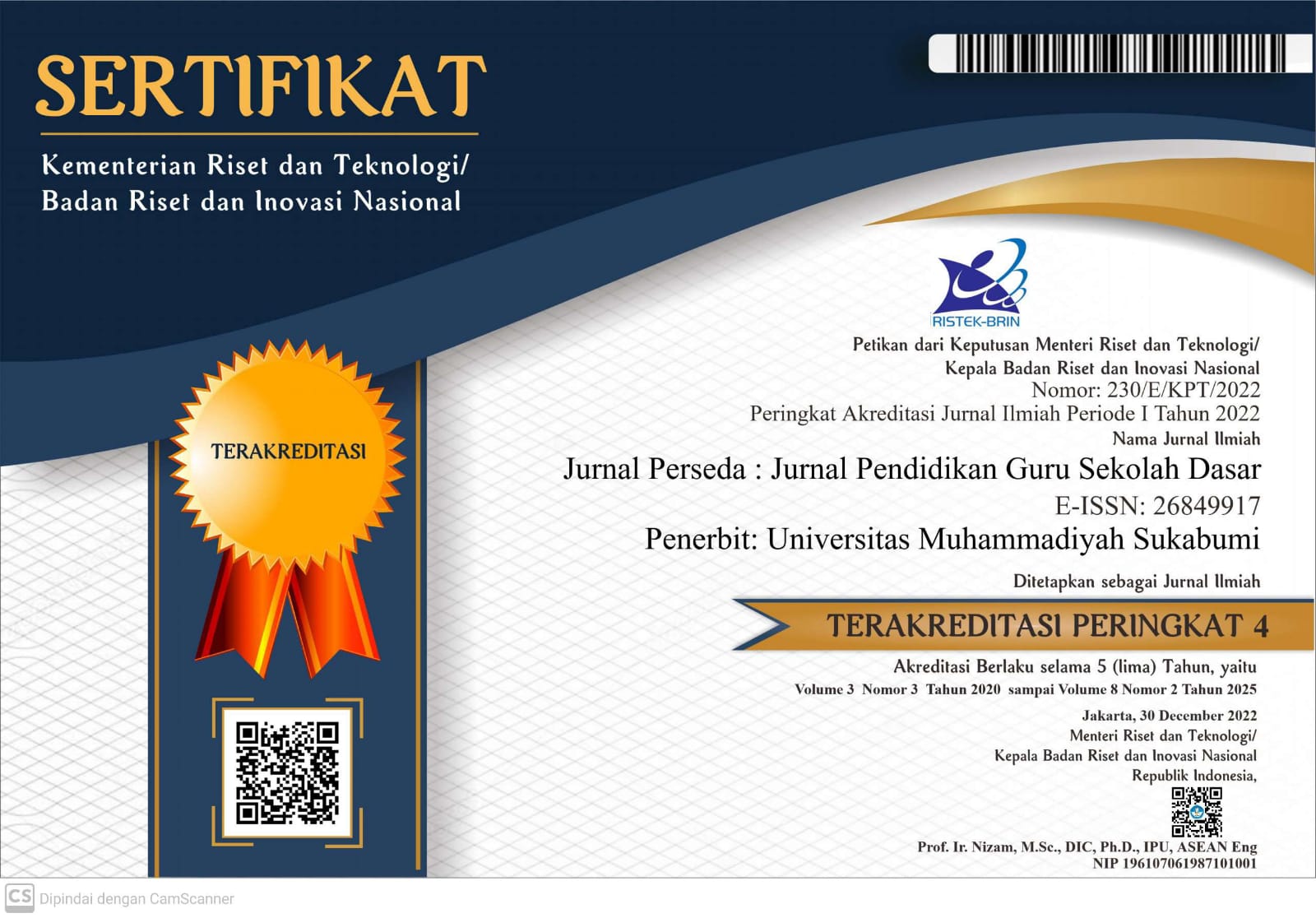Pengaruh Penerapan Model Flipped Classroom Tipe Peer Instruction Terhadap Hasil Belajar Pada Materi Organ Pernapasan Manusia Kelas V Sekolah Dasar
DOI:
https://doi.org/10.37150/perseda.v4i3.1336Abstract
This research is motivated by the existence of student learning outcomes that are still lacking in the science of human respiratory organs, students tend to be passive in the learning process, lack of teacher variation in the learning process, and teachers rarely use multimedia or learning media, which aims to find out if there is or is not. whether or not the effect of the flipped classroom model is the type of peer instruction and how big is the effect. The method used is a quantitative method of quasi-experimental research. The results showed that there was an effect of applying the flipped classroom model with peer instruction type. This is evident from the results of the calculation of the normality test for the pretest for the control class of 0.77 and the posttest of 0.155, while the pretest for the experimental class is 0.127 and the posttest is 0.200. The homogeneity test of the control and experimental class pretest was 0.907 while the posttest control and experimental class was 0.063. The results of the calculation of the T test obtained Tcount = 5.440 > Ttable = 1.671 with sig 0.000 <0.05 so Ha is accepted. Based on the following data, it means that there is an effect of the peer-instruction flipped classroom model on the learning outcomes of human respiratory organs.








